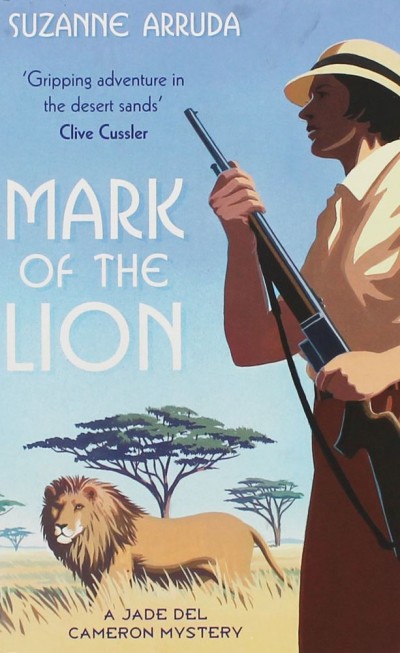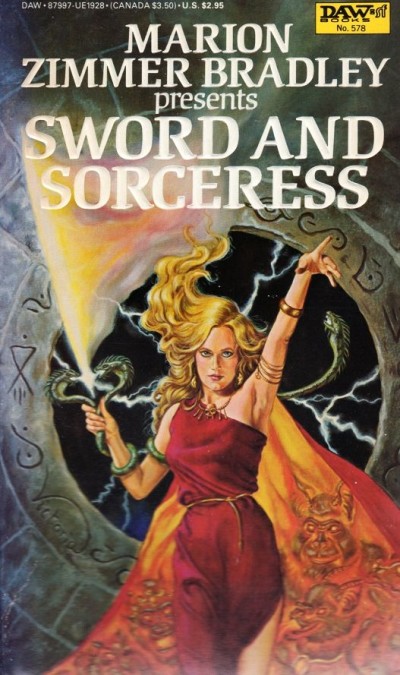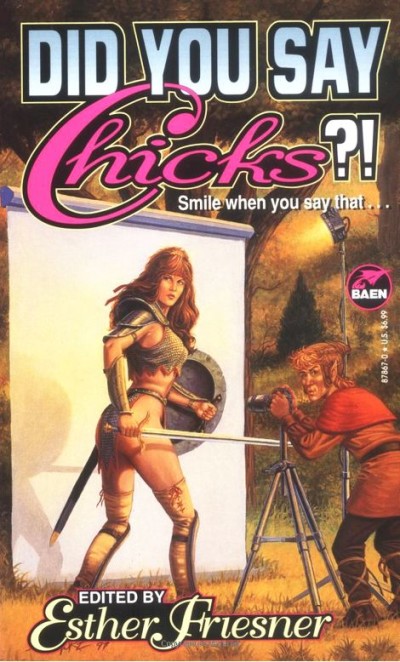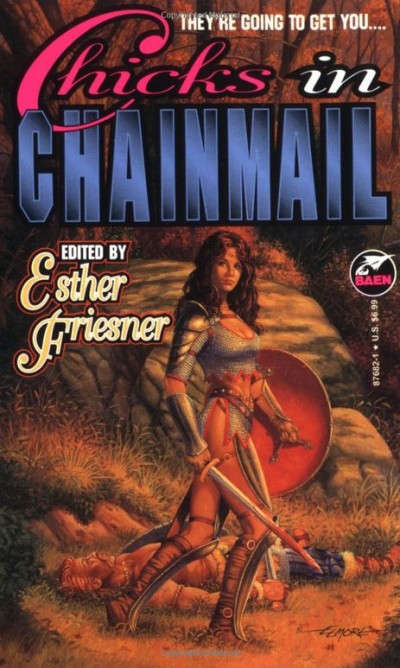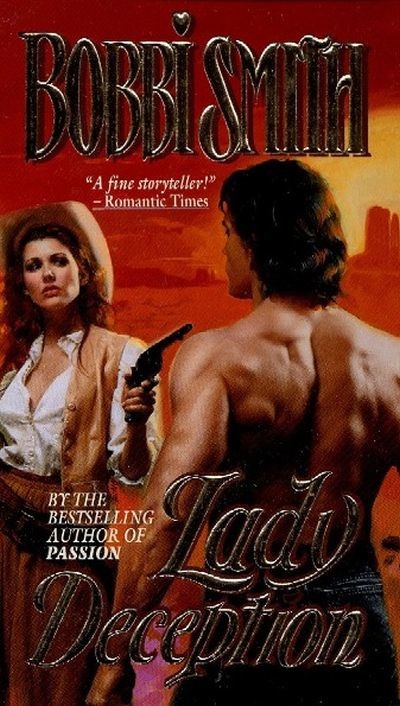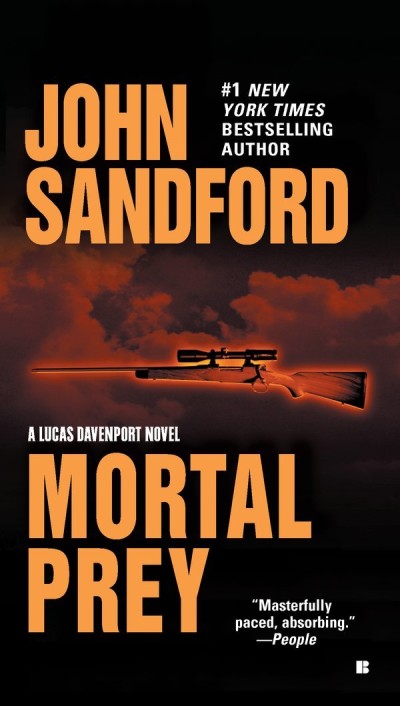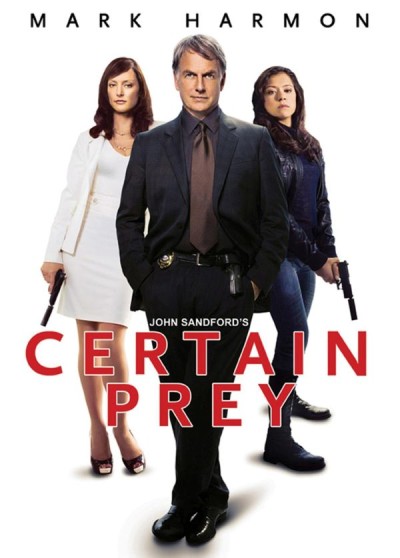Literary rating: ★★★★★
Kick-butt quotient: Variable
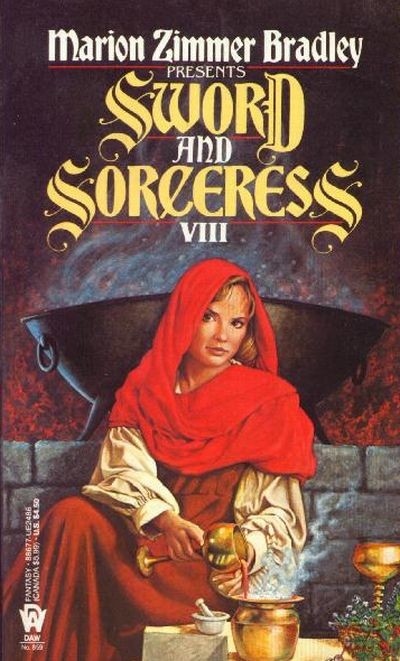 This anthology of 22 original stories is one installment of editor Bradley’s long-running series of Sword and Sorceress collections, the first of which appeared in 1984. This was the second book of the series that I read (they stand alone, and can be enjoyed in any order). Virtually all of the general comments in my review of the first book apply here as well, and two of the contributors to that volume, Diana L. Paxson and Jennifer Roberson, are also represented here. Like John W. Campbell in the heyday of Astounding Stories, the late Bradley had her “stable” of writers who contributed frequently to her Magazine of Fantasy and Science Fiction and to this and other long-running and one-time anthologies she edited, and whose careers she in many cases launched; several of them authored stories for this book. There’s a good mix here of established writers like Mercedes Lackey and Josepha Sherman (and some who would go on –this was published in 1991– to be much bigger names, such as Laurell K. Hamilton), and less known writers, some like Margaret Howes making their first sale of a story here. Three of the contributors are males.
This anthology of 22 original stories is one installment of editor Bradley’s long-running series of Sword and Sorceress collections, the first of which appeared in 1984. This was the second book of the series that I read (they stand alone, and can be enjoyed in any order). Virtually all of the general comments in my review of the first book apply here as well, and two of the contributors to that volume, Diana L. Paxson and Jennifer Roberson, are also represented here. Like John W. Campbell in the heyday of Astounding Stories, the late Bradley had her “stable” of writers who contributed frequently to her Magazine of Fantasy and Science Fiction and to this and other long-running and one-time anthologies she edited, and whose careers she in many cases launched; several of them authored stories for this book. There’s a good mix here of established writers like Mercedes Lackey and Josepha Sherman (and some who would go on –this was published in 1991– to be much bigger names, such as Laurell K. Hamilton), and less known writers, some like Margaret Howes making their first sale of a story here. Three of the contributors are males.
Besides the fact that they’re all swords-and-sorcery tales with female protagonists (warriors, sorceresses, a thief, etc.), the other common denominator of the collection is quality. Most of the stories are serious, often evoking very strong and complex emotional reactions and making you think; a few are rife with situational humor. But there isn’t a one of them that’s weak or poorly written; the craftsmanship here is uniformly high, though some selections are more substantial than others. All the stories have the trappings of fantasy; magic works in their worlds, for instance, and dragons may be included in the fauna. Edged weapon action, and/or lethal magical duels, may be a key part of the plot. But at bottom, most of these stories are really about people, and human concerns that are the same in any world: good and evil, right and wrong, personal growth and identity, coming of age, family and marital love, growing older, questions of what really matters in life. Several of the heroines could be called rough-edged; you might not approve of everything they do, or have done, and you aren’t necessarily expected to. But none of them are bad human beings; they’re all women I could understand and respect, and whose choices and safety I came to care about. (As in life, not all of these tales have unambiguously happy endings.)
A few of the protagonists are series characters, like Lackey’s Kethry and Tarma from her Valdemar series, or Paxson’s lesbian warrior-woman Shanna. Their stories here have a basic level of completeness in themselves; but you’d probably appreciate “Wings of Fire” better if (unlike me) you’ve read previously in the Valdemar books to have more understanding of the world and the magic system, and “Ytarra’s Mirror” definitely feels like a bead on the necklace of Shanna’s story arc. I’d also say that Paula Helm Murray’s “Kayli Kidnapped” has enough complex back story, and leaves enough unresolved issues, that it could work very well as a chapter in a novel. (But I still liked all of these!) Some of the most wrenchingly evocative stories here include Rima Saret’s “Marayd’s Escape,” Cynthia Ward’s “The Opal Skull,” Jere Dunham’s “East of the Dawn,” and Sherman’s “The Price of the Wind.” Hamilton’s “Geese” is a fine story that doesn’t descend into the porn that the author later became known for (it has some sensuality, but not in a bad way.) Picking favorites here is really hard to do, but (besides any already mentioned) some I could designate as such are Roberson’s “Fair Play,” Howes’ “Retirement Plan,” Dave Smed’s “Trading Swords,” Vera Nazarian’s “Beauty and His Beast,” and Linda Gordon’s “Stained Glass.”
Editor: Marion Zimmer Bradley
Publisher: DAW books, available through Amazon, currently only as a printed book.
A version of this review previously appeared on Goodreads.





